Watching and riding trains around the world
Living in the Yukon, I don’t get many opportunities to see trains other than those of the White Pass & Yukon Route (WP&YR), but they’re one of my favourite subjects when I travel, and I never pass up an opportunity to ride on a new railway. When I started looking for images for this post, I was actually surprised how many I have – here’s a small sampling.
I’ll start at home, with the WP&YR’s locomotive #96 crossing the bridge over the Nares River at Carcross. This engine was built by General Electric (construction number GE 34593) at their Erie, PA plant in March 1963.
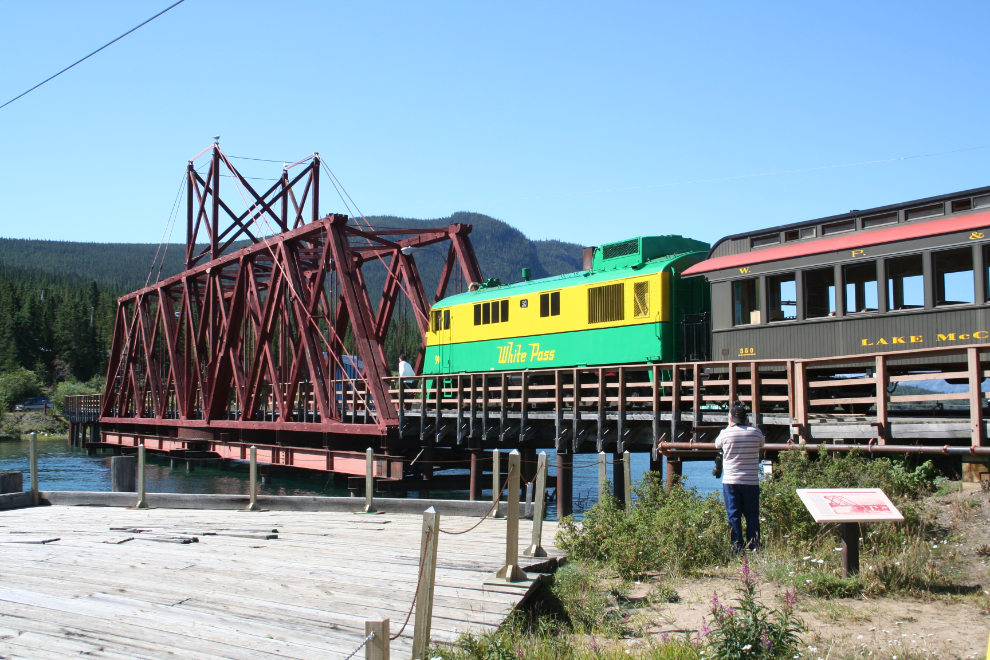
The snow in the White Pass is still deep in late May. This is the view to the south at about Mile 19.
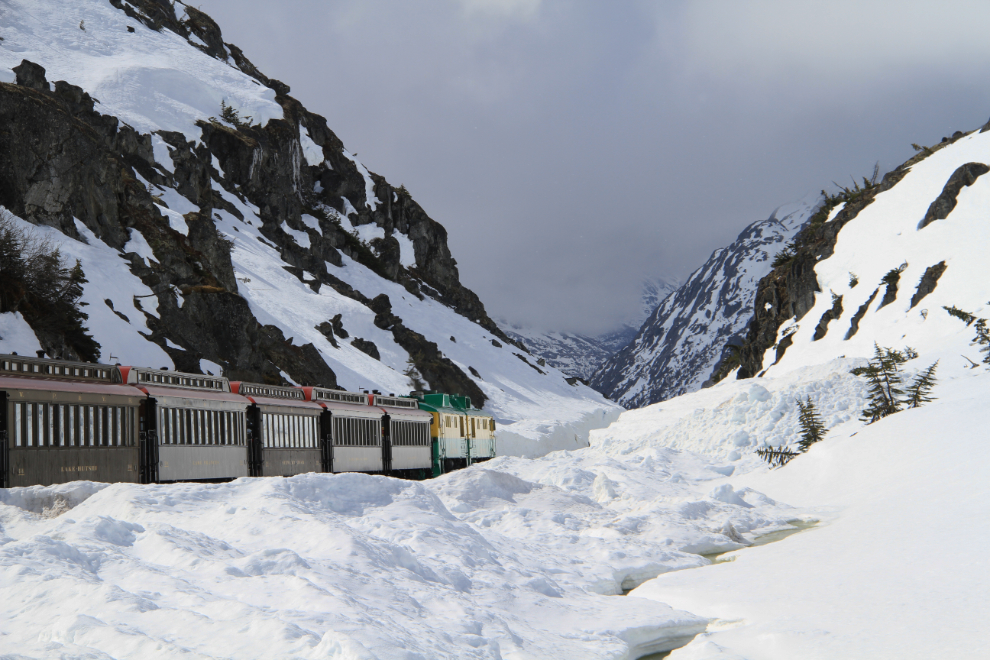
It’s easy to miss the train shed at the Dawson City Museum – it’s not mentioned on the museum’s Web site, and is only opened for a couple of hours a day. It houses 3 locomotives from the Klondike Mines Railway, including this 2-8-0 Baldwin that was built in 1885.
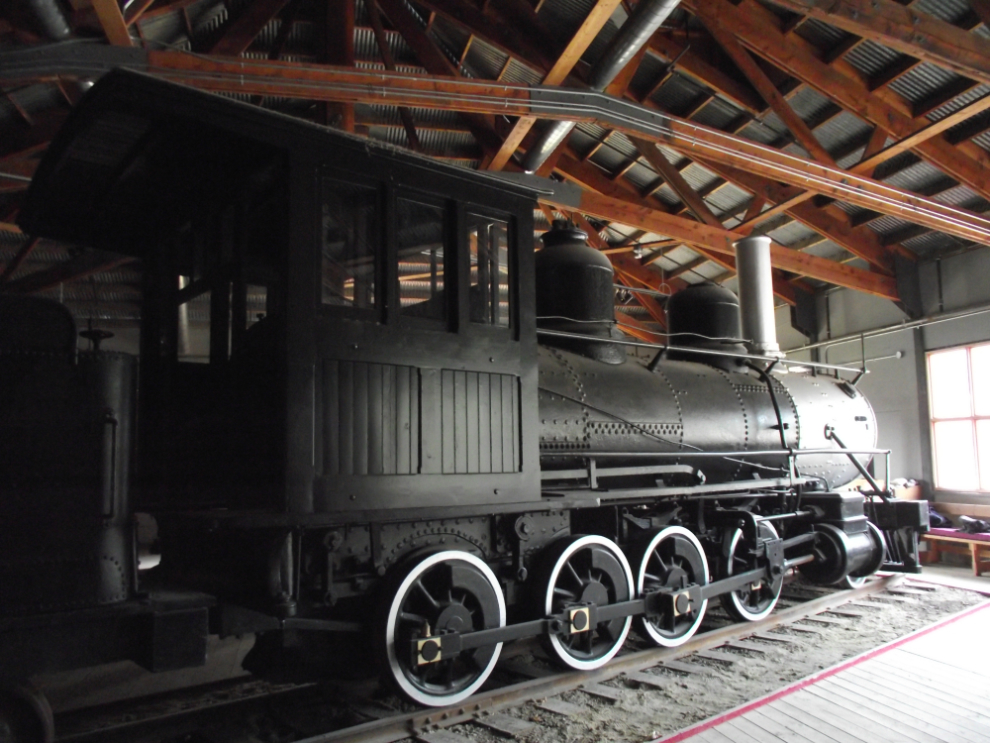
The other railroad that’s fairly close by is the Alaska Railroad, but I’ve only ridden it 3 times because when I was anywhere along the line I was usually driving a tour bus. This is the view looking south along the Nenana River as the train nears Denali National Park.
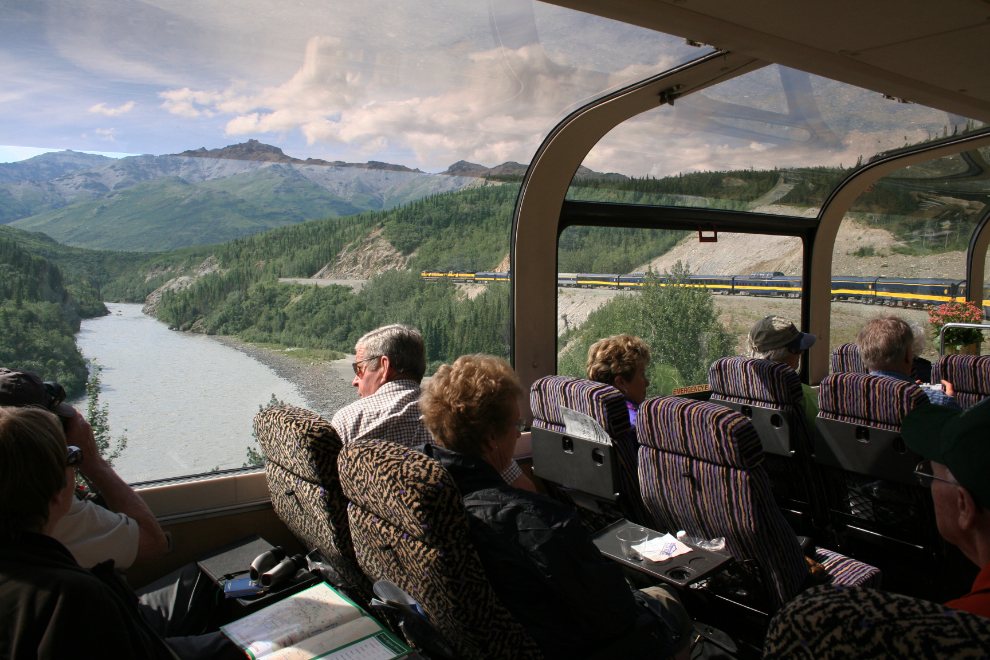
An Alaska Railroad train arriving at Denali with one of my tour groups.
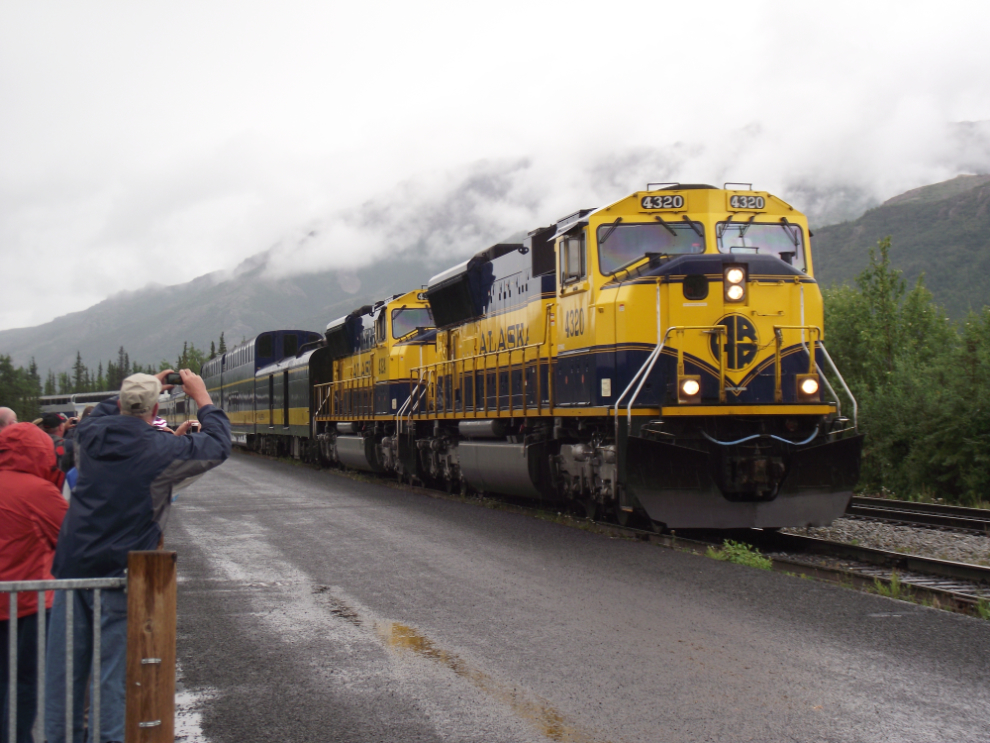
The most dramatic section of the Alaska Railroad by far is the one from Seward to Anchorage, run as the “Coastal Classic” and by special cruise ship charters, which is what we were on when I shot this photo at the most famous section historically, called “The Loops”.
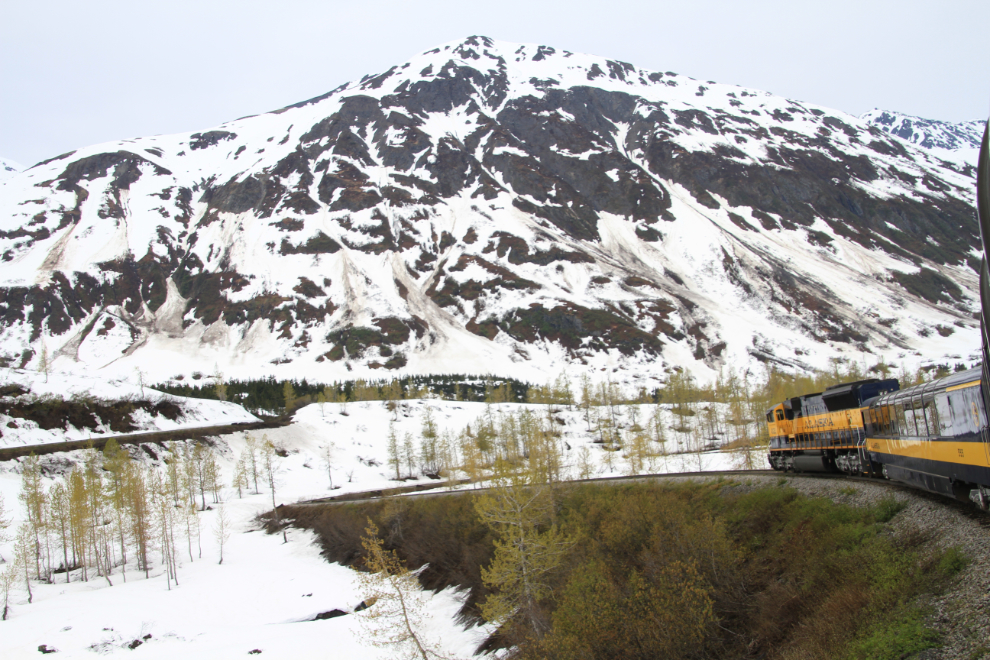
In the Alaska Railroad station at Fairbanks, you can see a large model railroad layout built by members of the Tanana Valley Model Railroad Club. Members fire it up for southbound train passengers every morning during the summer from 07:00 to 08:00.

Northern Alberta Railway Park is located at Mile 0 of the Alaska Highway in Dawson Creek, BC. the 4-acre park features this coach-caboose rail car also known as a “comboose,” which had been owned by the NAR (Northern Alberta Railway) and became known as the “Blue Goose Caboose”.
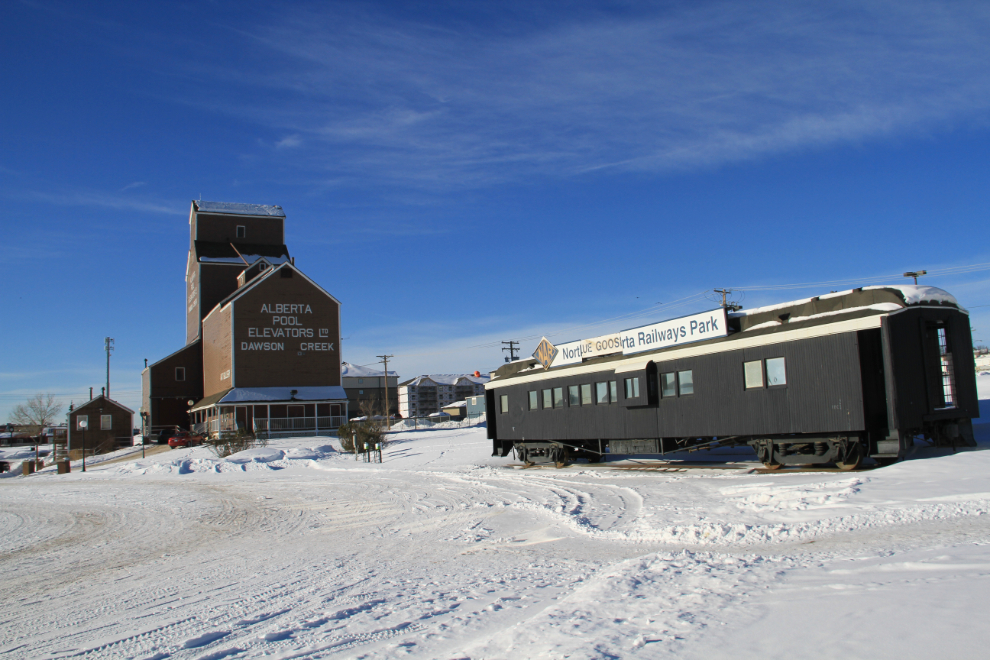
In the old train station at Dawson Creek (part of Northern Alberta Railway Park) is a small railway museum. The last of the classic grain elevators is now a very good public art gallery.
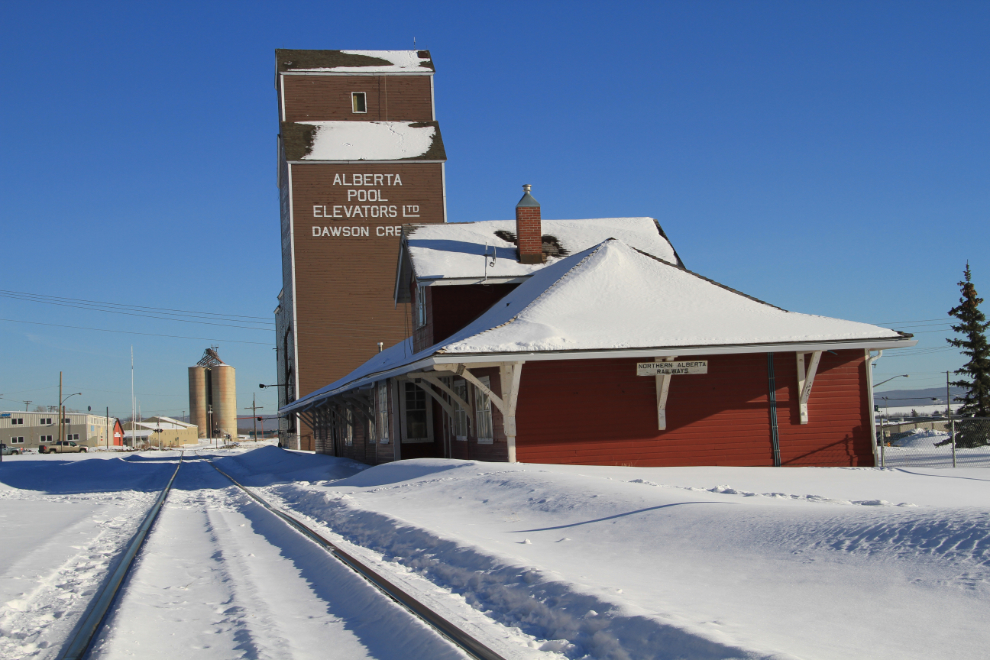
One of the classic train-spotting locations in the world is certainly Morant’s Curve on the Canadian Pacific Railway line just outside Lake Louise, seen from the Bow Valley Parkway. There is no sign marking this spot – you just have to recognize it driving north, and there’s a parking lot on the opposite side of the highway from the railway.
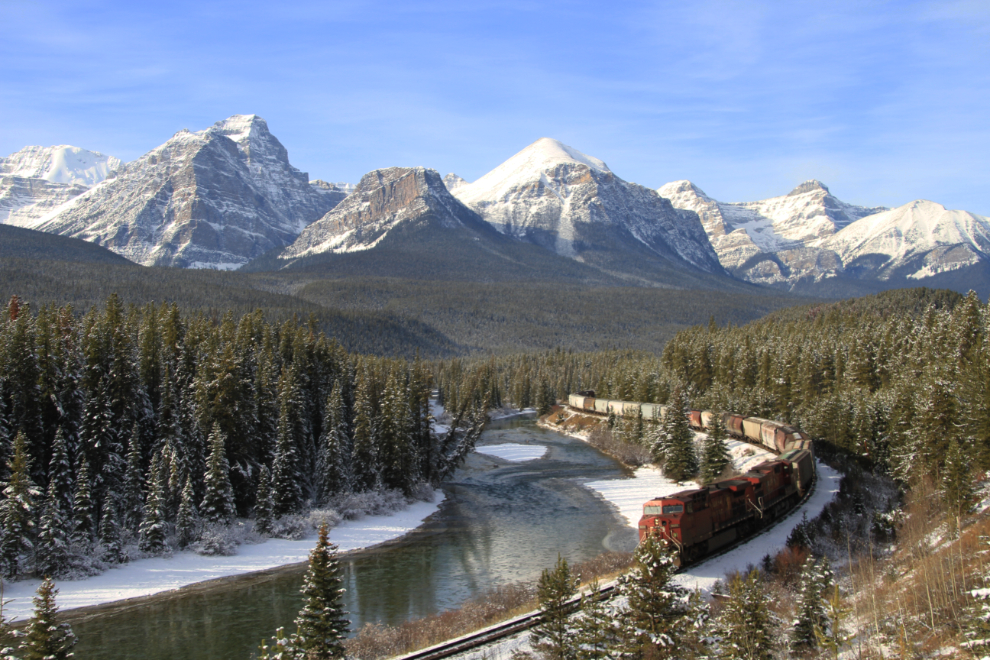
An extremely long Canadian Pacific Railway train nears a field of ginseng along the Thompson River near Walachin, BC.
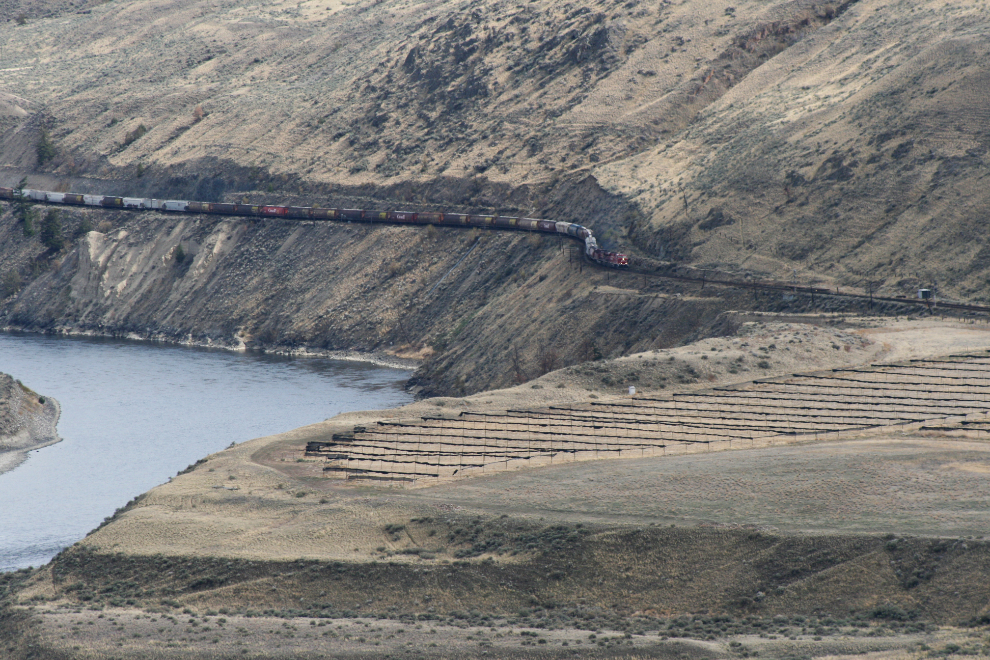
A Canadian National Railway train roars past the 1915 Canadian Northern Railway station at Fort Langley, BC. I was a member of the Langley Heritage Society’s management team that directed the restoration of the station in the early 1980s.
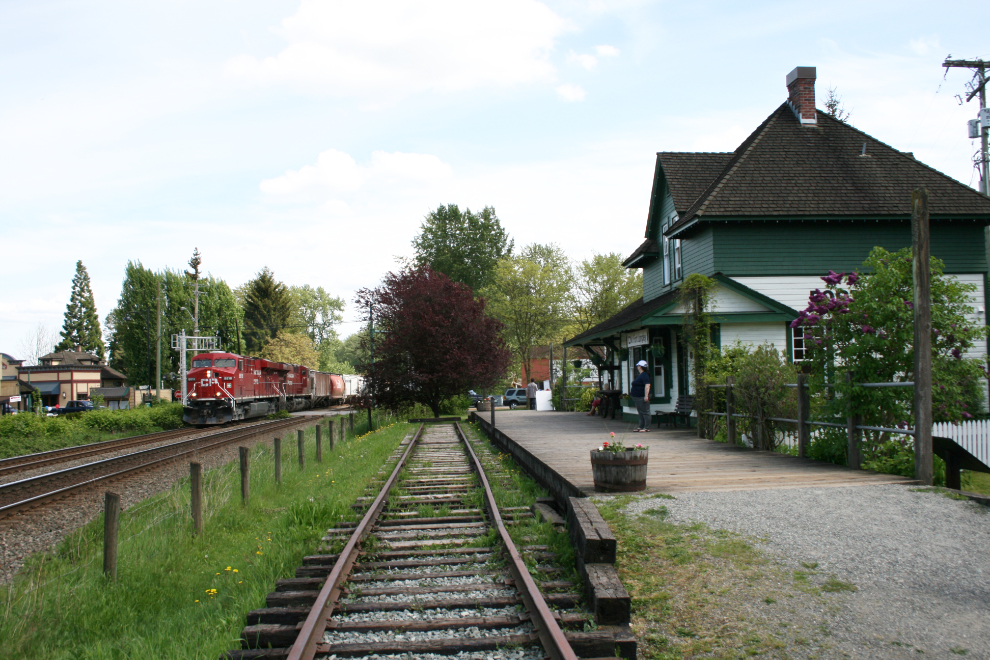
The railway station at Calgary’s Heritage Park Historical Village is a re-creation of the station the Canadian Pacific Railway (C.P.R.) built in downtown Calgary in 1893. There are many other train-related exhibits at the park – even an operating steam train that you can ride.
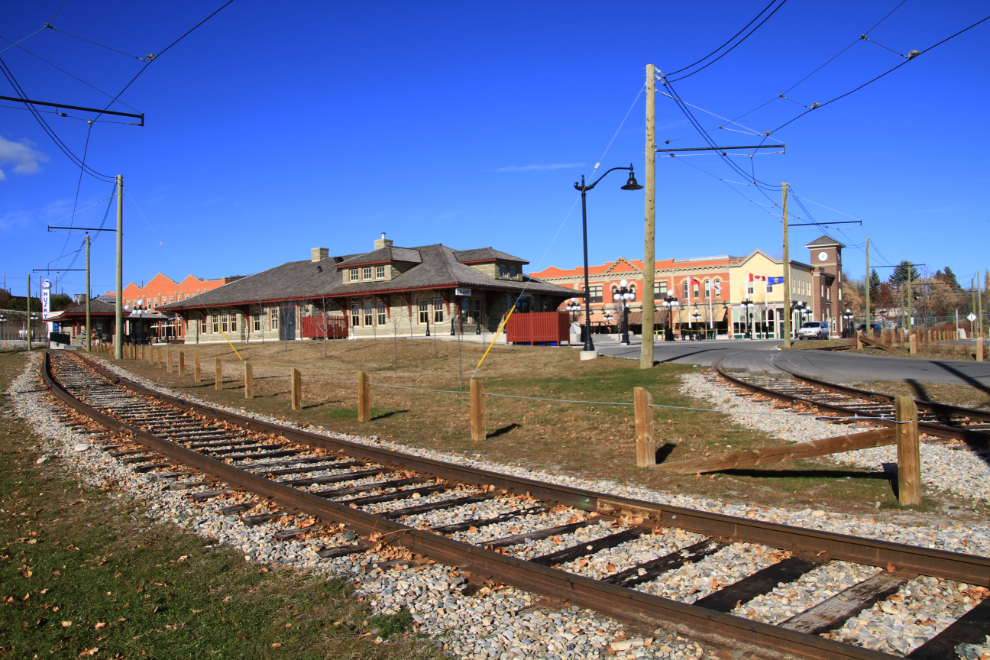
The railway station at Glencoe, Ontario, is the sixth to be built at that location. It was constructed by the Wabash-Grand Trunk Railway in the summer of 1904 in a Queen Anne style. It was closed and boarded up in October 1993 but was bought by the community for $1 and restored.
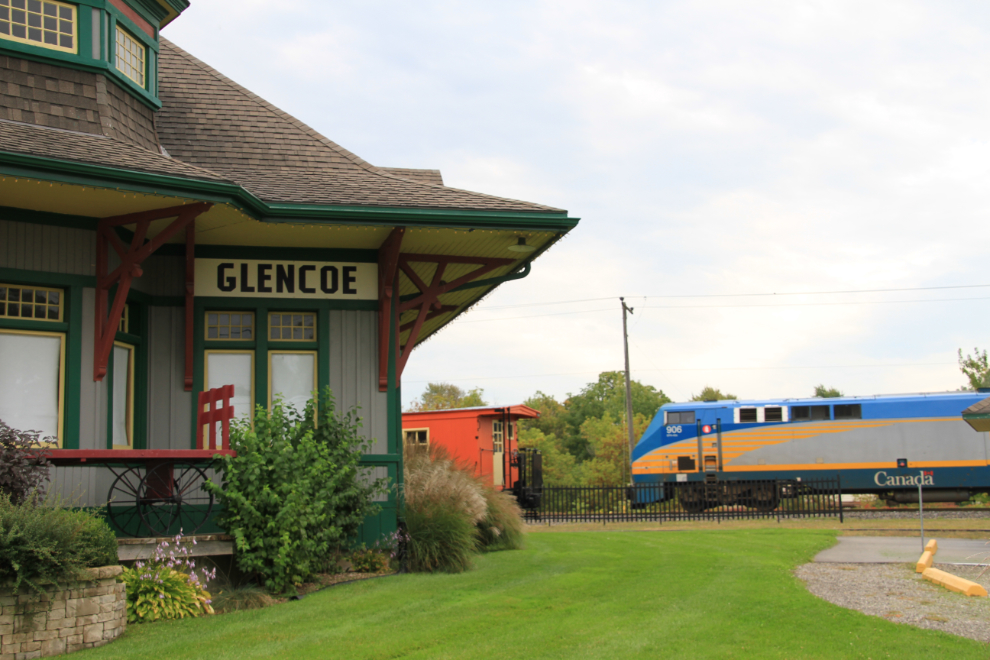
A large trestle at St. Thomas, The Railway Capital of Canada.
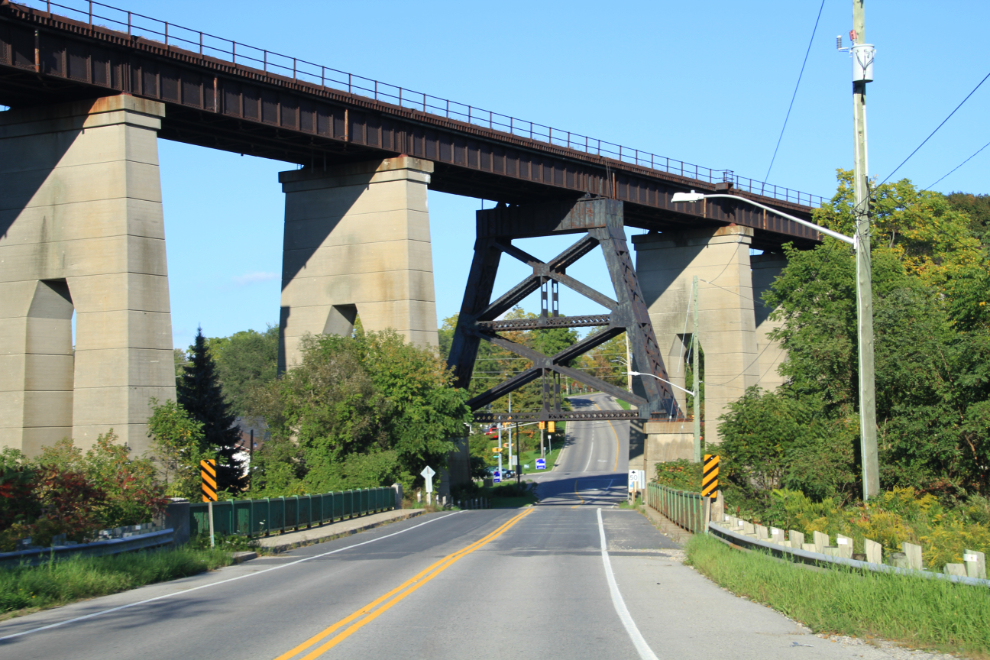
The tourist-oriented trains of the Port Stanley Terminal Rail travel over the tracks and roadbed of one of Ontario’s oldest railways, the London and Port Stanley Railway, which was built between 1853 and 1856 to run the 23 miles between Port Stanley and London.
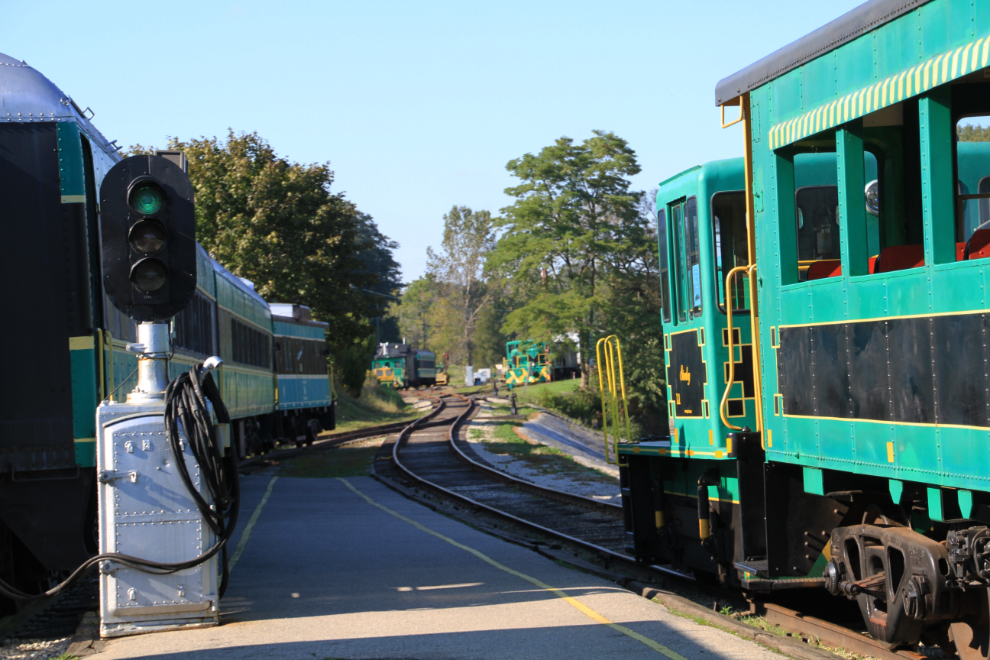
This passenger car was one of the early displays in the Toronto Railway Museum in downtown Toronto is a grand scheme that is building steam nicely (pun intended 🙂 ).
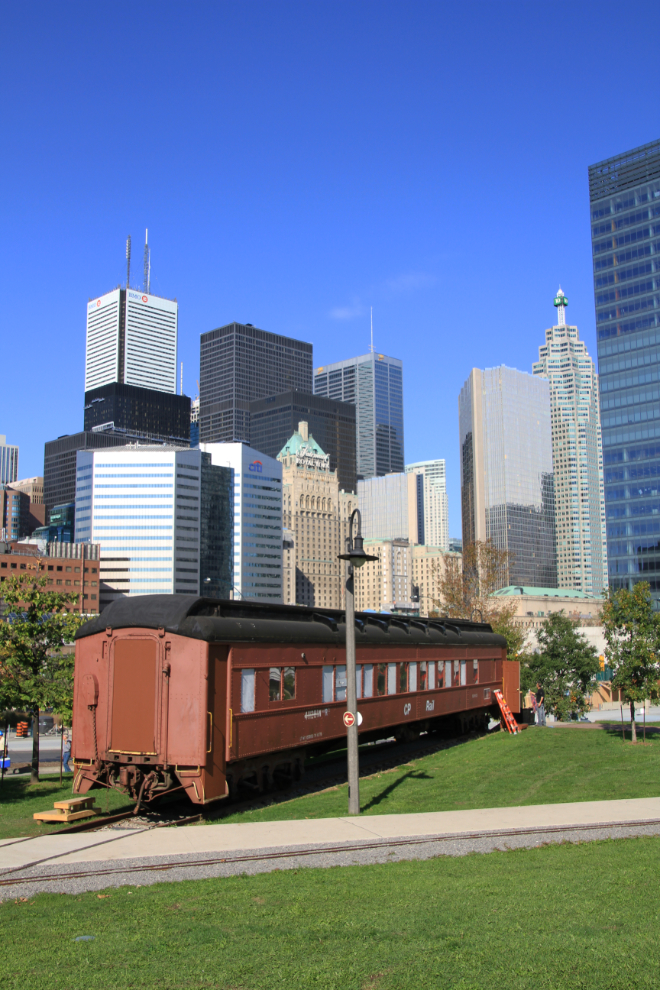
The Niagara Falls Incline Railway carries up to 1,600 passengers per hour between the hotel area high above the falls and Queen Victoria Park, on the edge of the falls.
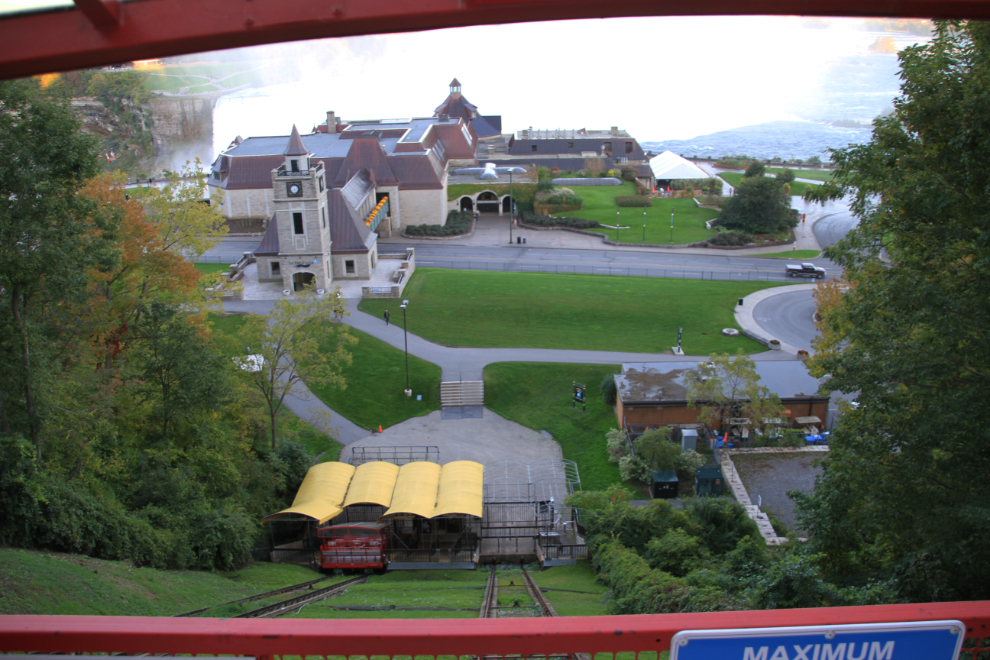
Back to the west coast, this bridge across the Dungeness River near Sequim, Washington, was built in 1915 by the Chicago, Milwaukee, St. Paul and Pacific Railway (later The Milwaukee Road). They used it until going out of business in 1980, and a successor, the Seattle and North Coast Railroad, ran across it until 1985 when the last train rolled across it. Its center span, consisting of 2 Howe trusses, is 150 feet long. It was opened to the public as part of a walking trail in 1992.

Even sand-castle trains can be fun, like these ones at Port Angeles, Washington 🙂

The sugar mill in La Romana, Dominican Republic, is the largest in the Caribbean, and is served by the Central Romana Railroad, which was established in 1911 and now has 757 km (470 mi) of rail line. This photo was shot from the deck of the cruise ship Costa Mediterranea as we arrived from Catalina Island.
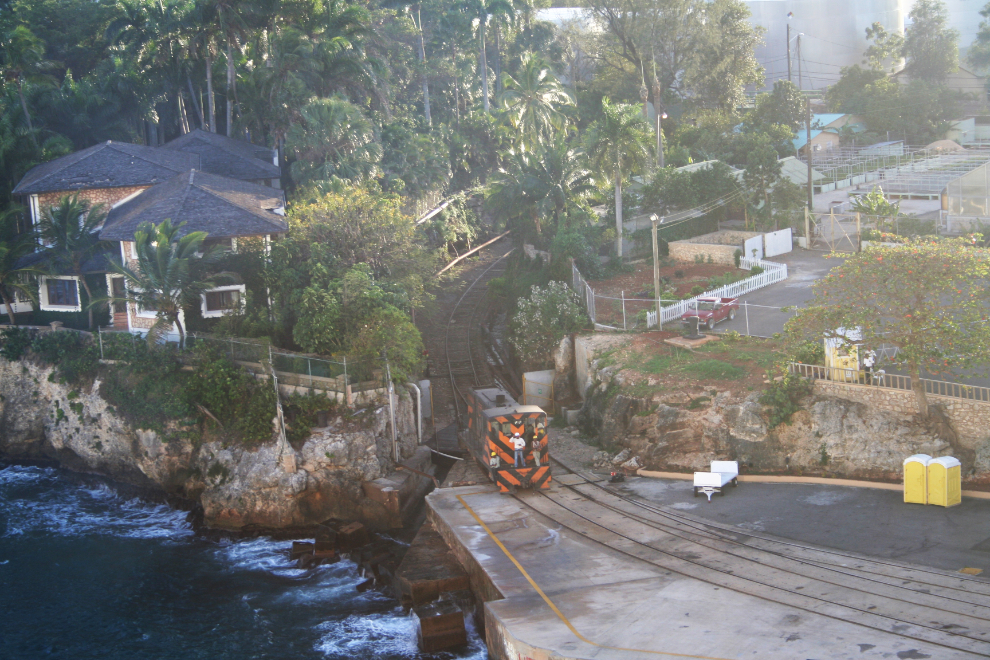
Getting around Basel, Switzerland, is made very easy by BVB’s rail and bus system, and we rode many of the trains while there. This photo was shot at the main Basel SBB railway station.

There are about 2,000 arrivals and departures each day at the Basel SBB railway station, but I caught a few quiet seconds for this shot.
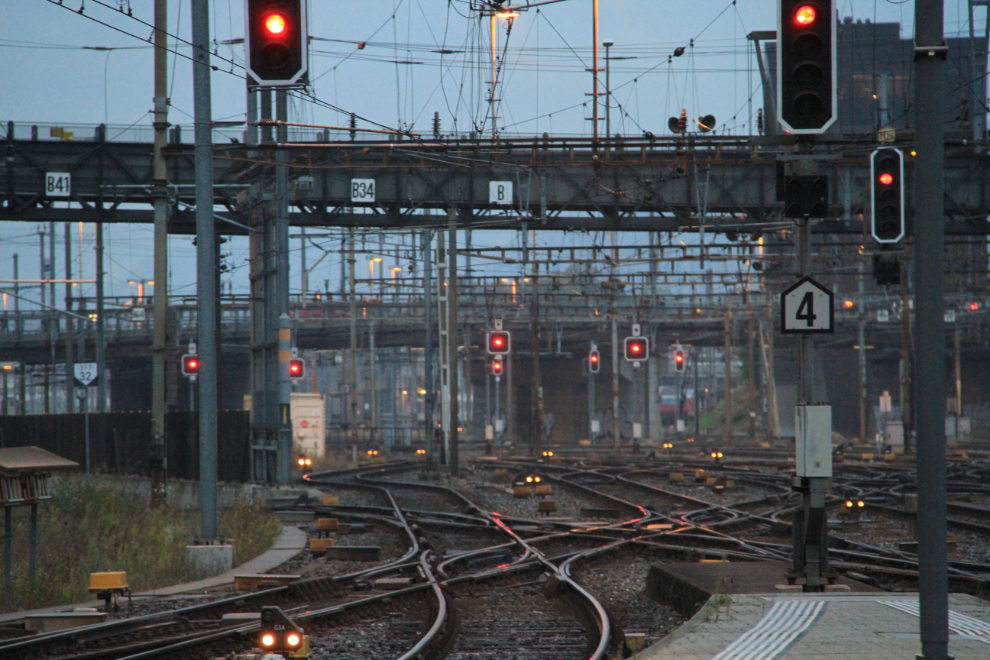
We made a day trip to Lucerne, and took this train, a Bombardier ICN Tilting Train, which can hit 200 kmh. This photo was shot at Lucerne.
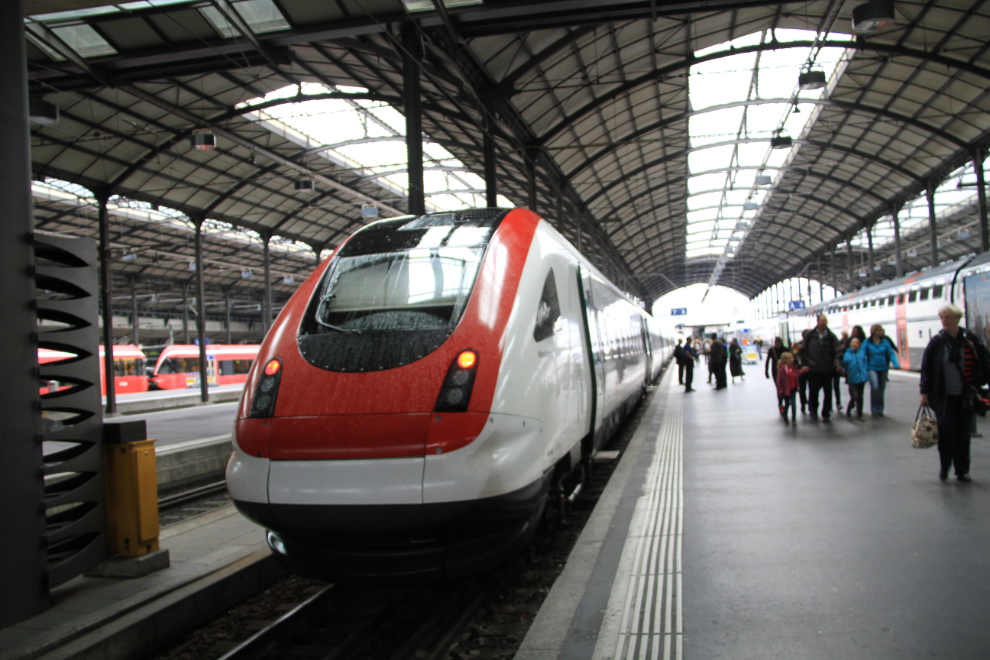
The train we caught for the trip from Lucerne back to Basel was much older than the Bombardier ICN, but still very comfortable.
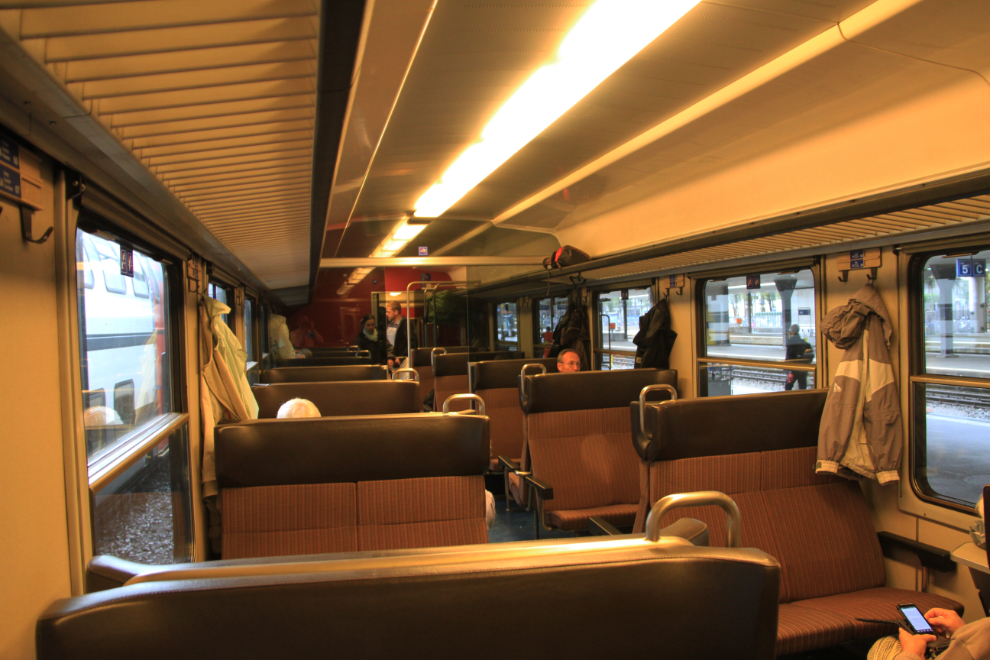
The main railway (the Rechte Rheinstrecke), and a little tourist “train” that we rode in Rudesheim, Germany.
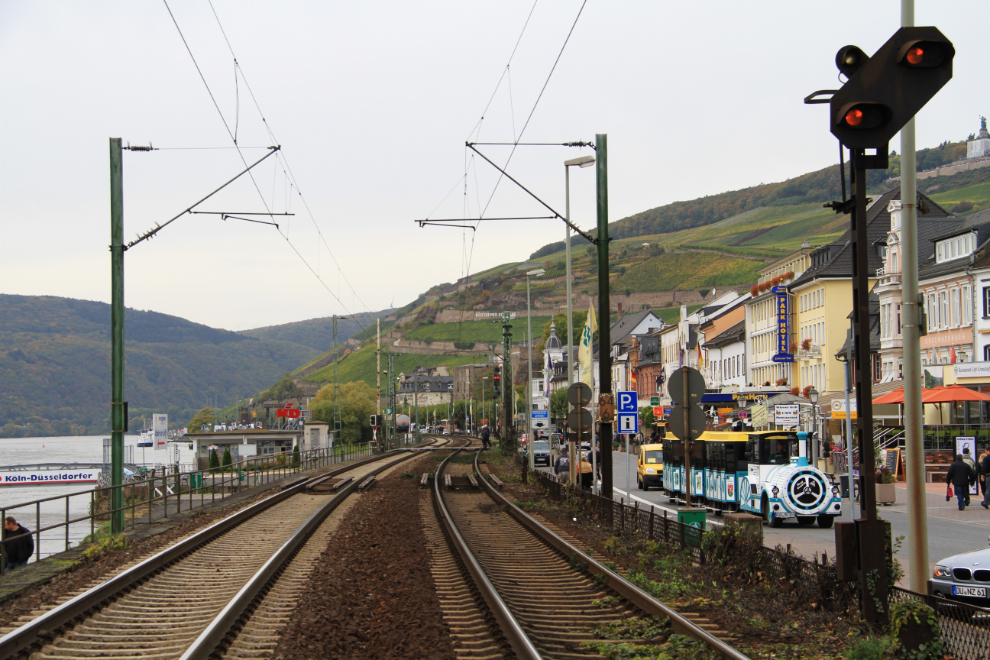
This maintenance and cleaning facility at Boppard, Germany, is owned by Rhenus Veniro, operator of the Hunsrück railway since 2009. This view is from the chairlift that takes people to a viewpoint and restaurant high above the Rhine River.
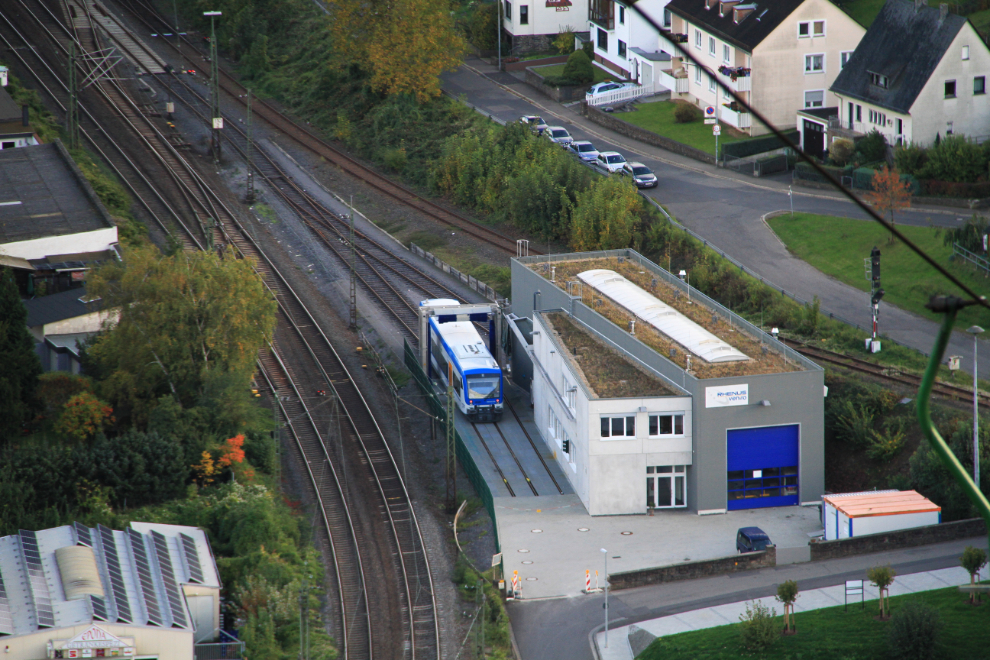
A modern train and ancient fortifications in downtown Luxembourg City.
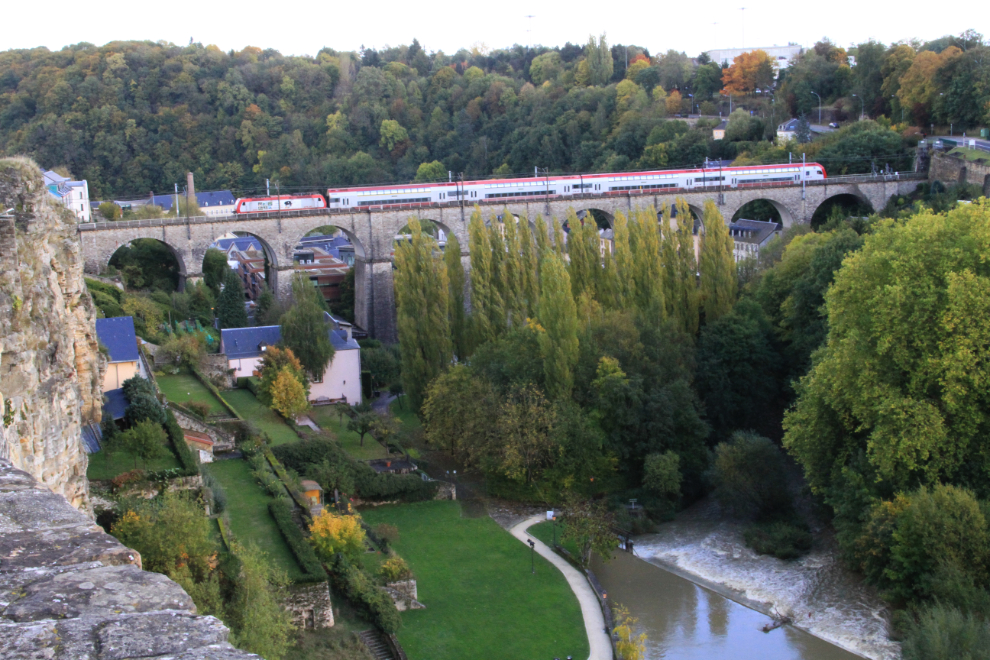
Arriving at the Hauptbahnhof in Cologne, Germany, this train is on the Hohenzollern Bridge across the Rhine River. The bridge is most famous for the ens of thousands of “love locks” that have been placed on it.
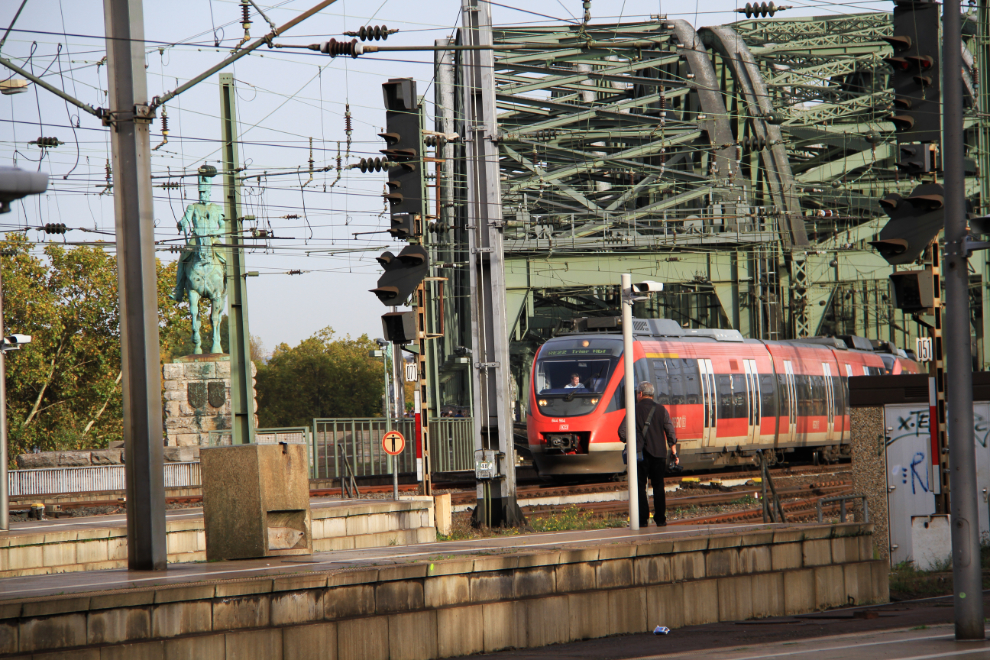
The railway system in New Zealand, operated by KiwiRail, has some very good scenic routes, though we didn’t ride any, and in fact saw very trains running during our month on the North Island. Some of the trestles are very impressive – this one is along the highway (SH1) from Waitarere to Taupo.
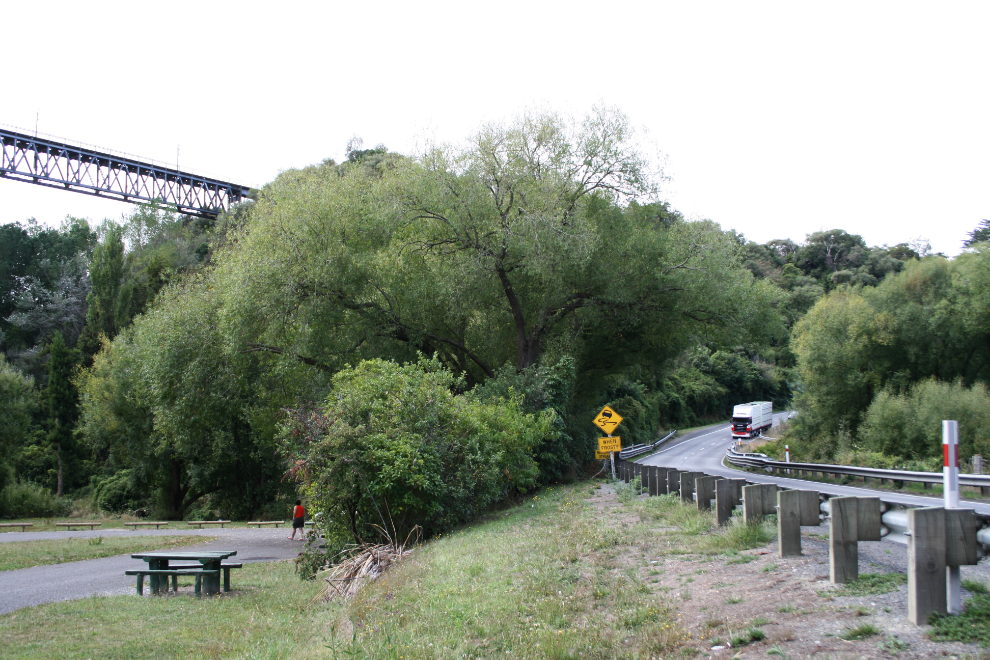
At Waihi, New Zealand, we took an hour-long ride on the very scenic Goldfields Railway. This is the Price 0-4-0 diesel locomotive, built in 1944, that we rode behind, but they also operate several other locomotives, both diesel and steam.
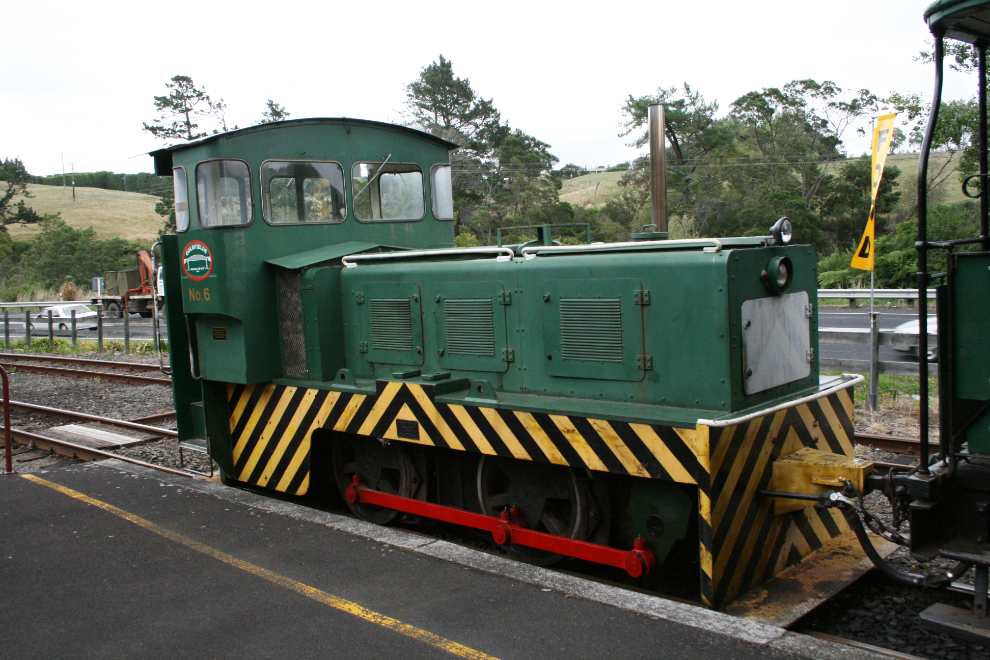
The Goldfields Railway takes passengers on a slow wander though very pretty country.
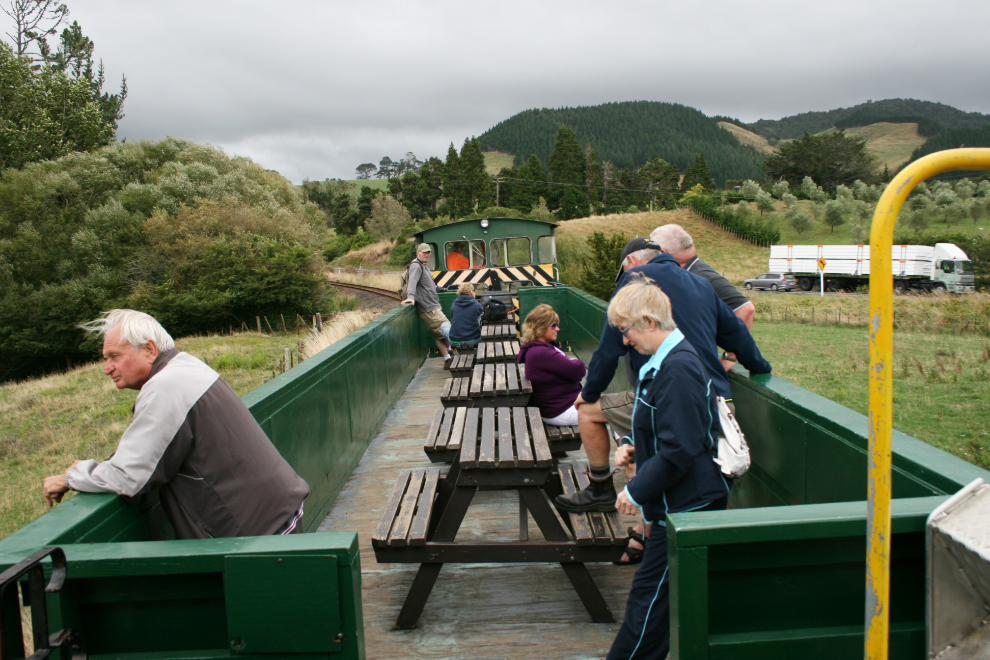
The most unique railway I’ve ever ridden on is certainly the Driving Creek Railway on New Zealand’s Coromandel peninsula. The whole Driving Creek facility kept us shaking our heads in amazement that one man could accomplish this. While we usually think of railways as industrial projects, this one is more of a whimsical work of art that you truly have to see to believe.
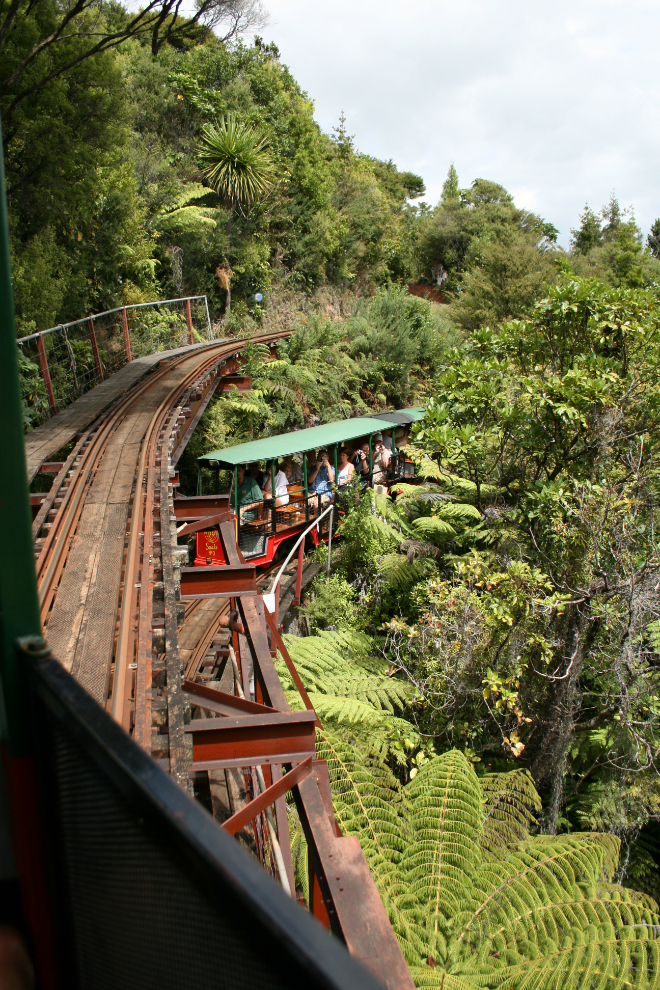
To climb the mountain, the Driving Creek Railway requires 2 spirals, 3 short tunnels, 5 reversing points and several large viaducts. There are small artworks are everywhere you look – incorporated into walls, hanging from trestle beams and set in the forest. The view over the Hauraki Gulf from the No. 5 reversing point on the railway (seen below), and at the Eyefull Tower at the end of the line, is wonderful. From the point on that trestle where the train stops, though, it’s a long way down!
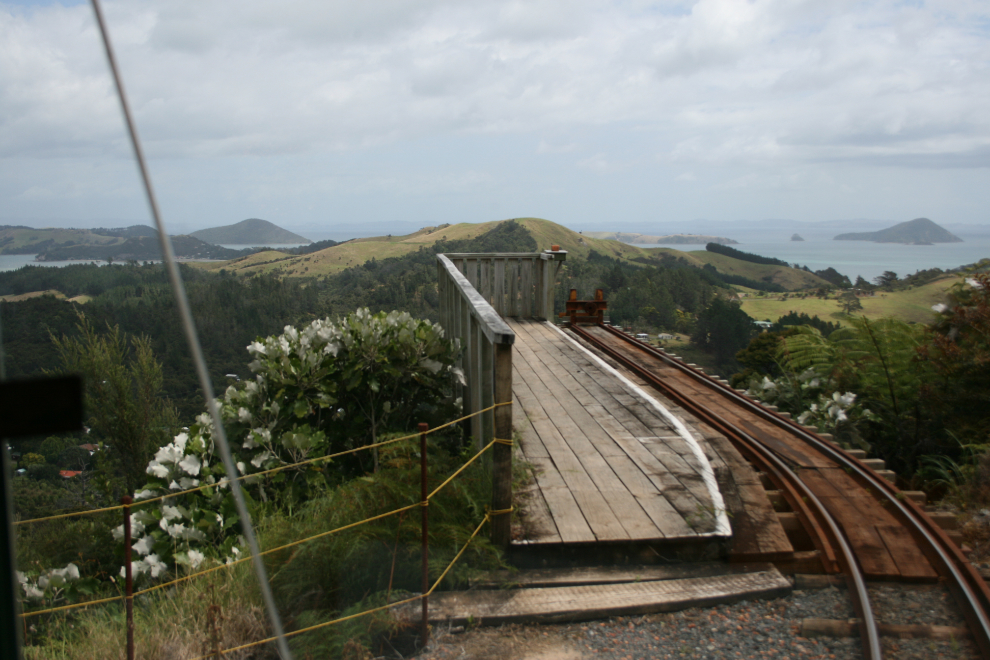
Well, I got a bit carried away with that, but that’s just a tiny look through the collection 🙂